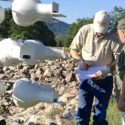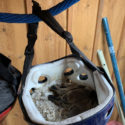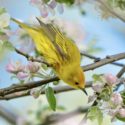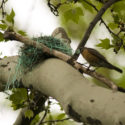 Photo ©
Keith Williams
Photo ©
Keith Williams

Lakeside Living
This month we were pleased to bulk upload 136 nest attempts submitted by Mike McCartney of Leaser Lake Heritage Foundation. The dataset included American Kestrels, Purple Martins, Eastern Bluebirds, Tree Swallows, Carolina Wrens, and other cavity-nesting birds of Pennsylvania. A big thanks to Mike for archiving these data with NestWatch!

Your Gear = Their Cozy Nest
The weather is getting warmer, and we’re all getting ready to spend more time outside; but don’t forget to check your equipment for nests! Bicycle helmets, watering cans, patio umbrellas, hanging baskets, grills, or anything that provides a hiding space could contain a nest. Stephen Gates learned this last year, when a pair of Western Bluebirds nested in a kayak helmet in his shed in New Mexico (ignoring the nest box nearby). Birds nest around human buildings frequently. Be aware, and you just might find one! If you do, we encourage you to report your observations to us here at NestWatch so scientists can learn from them. Be patient while the birds finish their nest, and remember that it’s not safe to move a bird’s nest while it is in progress.

Warblers Are Flying!
Over at Nest Quest Go!, the warblers project is 85% finished. If you have some free time, help us get across the finish line by transcribing a few nest cards. Warbler nests are tricky to find, and you might glean some tips on nest finding while helping us archive the data.
Head on over to Nest Quest Go!: Warblers and help us get this card set done before the warblers finish their migration.

Plastic “Easter Grass” Not For the Birds
With Easter Sunday coming soon, it’s a good time to remind those celebrating that plastic grass can be an entanglement hazard when birds incorporate it into their nests. For bird-safe fun, use paper grass or colorful sheets of tissue paper to line children’s baskets. If using the plastic version, be sure to collect any that escapes the basket, and cut it into one-inch pieces before disposing of it in the trash (or save it for next year). Every little bit we can do helps!